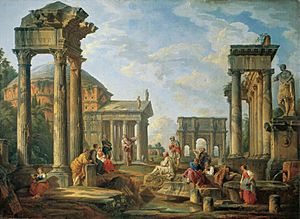Cultural heritage facts for kids

Cultural heritage ("national heritage" or just "heritage") is the legacy of physical artifacts and intangible attributes of a group or society that are inherited from past generations, maintained in the present and bestowed for the benefit of future generations. Often though, what is considered cultural heritage by one generation may be rejected by the next generation, only to be revived by a succeeding generation.
Physical or "tangible cultural heritage" includes buildings and historic places, monuments, artifacts, etc., that are considered worthy of preservation for the future. These include objects significant to the archaeology, architecture, science or technology of a specific culture. "Natural heritage" is also an important part of a culture, encompassing the countryside and natural environment, including flora and fauna. These kind of heritage sites often serve as an important component in a country's tourist industry, attracting many visitors from abroad as well as locally.
The heritage that survives from the past is often unique and irreplaceable, which places the responsibility of preservation on the current generation. Smaller objects such as artworks and other cultural masterpieces are collected in museums and art galleries. Grass roots organizations and political groups have been successful at gaining the necessary support to preserve the heritage of many nations for the future.
Related pages
Images for kids
-
Karl von Habsburg, on a Blue Shield International fact-finding mission in Libya
-
Plaque stating the designation of Carthage as a World Heritage Site.
See also
 In Spanish: Patrimonio cultural para niños
In Spanish: Patrimonio cultural para niños





